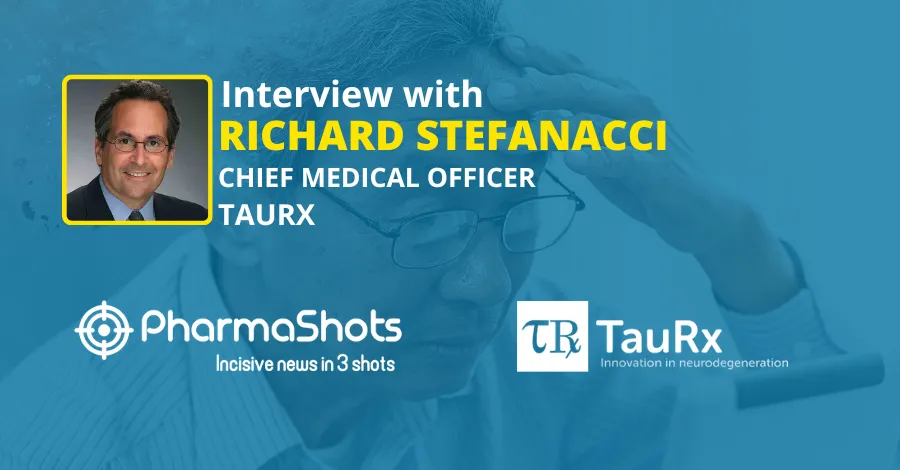
PharmaShots Interview: Dermavant’s Philip Brown Shares Insight on the P-III (PSOARING 3) Study of Tapinarof
In an interview with PharmaShots, Philip Brown, Chief Medical Officer at Dermavant share his views on the data of Tapinarof in the P-III (PSOARING 3) study for the treatment of Plaque Psoriasis & highlights new patient satisfaction data
Shots:
- The P-III (PSOARING 3) extension study evaluates tapinarof (1%, qd) in adult patients with PsO for ~40wks. & a 4wks. safety follow-up period
- The results showed high rates of satisfaction across all evaluated parameters, 78.5% of patients who completed the survey showed that 81.7% considering more effective, 85.8% can manage psoriasis with tapinarof, 82.5% will continue to use tapinarof if available. The results were presented at Winter Clinical Dermatology 2022
- The US FDA has accepted an application for tapinarof to treat PsO in Aug 2021 & assigned a PDUFA date in Q2’22. Tapinarof is a non-steroidal, cosmetically elegant topical cream & a therapeutic aryl hydrocarbon receptor modulating agent for PsO & AD
Tuba: Discuss the study design of the Phase 3 PSOARING 3 study.
Philip Brown: PSOARING 3 was a long-term, open-label, extension study that evaluated the safety and efficacy of tapinarof cream, 1% for the treatment of plaque psoriasis in adults. Patients in the study had previously completed treatment with tapinarof or vehicle in either the PSOARING 1 or PSOARING 2 Phase 3 pivotal efficacy and safety study. PSOARING 3 consisted of up to 40 weeks of treatment with tapinarof cream, 1%, and a 4-week safety follow-up period. As such, patients who received the drug during PSOARING 1 and PSOARING 2 and who completed PSOARING 3, received treatment with tapinarof cream, 1% for up to 52 weeks. This study was unique because it required adult patients to continue dosing until complete disease clearance (PGA = 0) and the patients were followed off therapy until a worsening of psoriasis defined as PGA ≥ 2. Greater than 90% of eligible patients who completed PSOARING 1 and PSOARING 2 enrolled in PSOARING 3. Dermavant released interim analysis results from PSOARING 3 in February 2021 and the study was completed on April 5, 2021.
Tuba: What are the key findings of the open-label Phase 3 PSOARING 3 long-term extension study?
Philip Brown: At Winter Clinical, Dermavant presented new results from a patient satisfaction questionnaire in the PSOARING 3 study, which demonstrated consistent high rates of satisfaction and positive perception of treatment with tapinarof cream, 1% across all adult patient-relevant parameters. Of the 78.5% (n=599) of adult patients from PSOARING 3 who completed the survey:
- Patients preferred tapinarof cream, 1% to prior topical treatments with 81.7% considering it more effective;
- 85.8% either strongly agreed or agreed they could easily manage their psoriasis with tapinarof; and
- 82.5% expressed that they would use tapinarof again or continue using it if available.
Previously reported results from the Phase 3 PSOARING 3 study showed that nearly 41% of adult patients on tapinarof cream, 1% achieved complete disease clearance (PGA score of 0) at least once during the LTE trial. For those who entered this study with a PGA score of 0, the remittive effect observed with tapinarof – defined as the maintenance of PGA=0 or 1 while off therapy was approximately four months in duration.
Tuba: How will this treatment be different from the current psoriasis treatments?
Philip Brown: If approved, tapinarof cream, 1% will be a novel, first-in-class, non-steroidal topical therapeutic aryl hydrocarbon receptor modulating agent (TAMA) for adults with plaque psoriasis. Currently, the most commonly prescribed topicals for psoriasis are steroids, which have a number of side effects, including redness, skin thinning, and stretch marks. While there are no head-to-head studies comparing tapinarof to steroids, clinical trials have demonstrated that tapinarof cream, 1% once-daily is well tolerated for long-term use, and the most common treatment-related adverse events (>1%) were folliculitis, contact dermatitis, headache, pruritus, and dermatitis. A lack of topical innovation in recent years offers tapinarof cream, 1% an unprecedented opportunity to address treatment gaps, such as tolerability on sensitive skin areas, durability with long-term use, remittive effect off-therapy, and potentially establish a new standard of care for adult patients with plaque psoriasis.
We believe the novel mechanism of action (MOA) of tapinarof cream, 1% may be a potential game-changer for both the physicians and adult patients we serve.
Tuba: What change will the treatment bring with the potential FDA approval?
Philip Brown: As a nonsteroidal, cosmetically-elegant, once-daily, topical cream, tapinarof cream, 1% has shown to be safe and effective in sensitive and difficult to treat areas such as the face, groin, and underarms in adult plaque psoriasis patients. As presented at this year’s Winter Clinical conference, adult patients were consistently satisfied with tapinarof treatment in terms of treatment efficacy, formulation elegance, ease of application, impact on daily life, and preference for tapinarof cream, 1% versus prior psoriasis therapies.
At Dermavant, we aren’t making compromises or copycat products — we are focused on providing a new treatment option for adults with mild, moderate, and severe plaque psoriasis.
Tuba: Please discuss the MOA of Tapinarof. Can we get a glance at the other indications in which you are evaluating Tapinarof?
Philip Brown: The investigational drug tapinarof cream, 1% is a novel, nonsteroidal, once-daily, topical cream — a cosmetically-elegant, potential first-in-class plaque psoriasis treatment for adults. Tapinarof binds to and activates the aryl hydrocarbon receptor (AhR), which downregulates proinflammatory cytokines implicated in plaque psoriasis (e.g., IL-17A and IL-17F), promotes skin barrier normalization, and increases antioxidant activity.
We are investigating the MOA of tapinarof and how it can be applied to additional dermatological and other conditions to help as many patients as possible.
Dermavant’s robust medical dermatology pipeline includes both late-stage and earlier-stage-development product candidates that we believe could address important immuno-dermatological conditions, including plaque psoriasis, atopic dermatitis, vitiligo, primary focal hyperhidrosis, and acne.
Tuba: What are your marketing strategies post FDA approval of Tapinarof?
Philip Brown: If approved, we look forward to bringing tapinarof cream, 1% to as many adult patients and physicians in the plaque psoriasis community as possible. We plan on continuing our commercial preparations and executing innovative marketing programs to educate healthcare providers on the potential benefits of tapinarof cream, 1%. We have been pleased with the tapinarof data announced thus far, as results continue to highlight how we are prioritizing innovation for adults with inflammatory skin conditions.
We also look forward to progressing the ongoing Phase 3 clinical program evaluating tapinarof in adults and pediatric patients as young as 2 years old with atopic dermatitis (AD).
Tuba: When are you planning to file regulatory submissions or expect approvals in other geographies?
Philip Brown: In August 2021, the FDA accepted a New Drug Application for tapinarof cream, 1% for the treatment of plaque psoriasis in adult patients, and assigned a Prescription Drug User Fee Act target action date in Q2 2022. We plan on bringing this novel treatment candidate to the U.S. market as expeditiously as possible, subject to regulatory approval.
In September 2021, we announced that the first patient has been dosed in the ADORING study – a Phase 3, double-blind, vehicle-controlled pivotal study of tapinarof cream, 1% for the treatment of atopic dermatitis (AD). We are eager to continue progressing the ADORING study to investigate the role tapinarof may have in advancing treatment for patients as young as 2 years old with AD.
Tuba: What will Dermavant’s next step be for improving the lives of psoriasis patients?
Philip Brown: We look forward to continued regulatory discussions, partnerships with the dermatology community, and publication of clinical trial data to bring tapinarof cream, 1%, if approved, to adult patients and physicians.
Source: Health Grades
About Author

Dr. Philip Brown is the MD, JD, Chief Medical Officer at Dermavant. He has over 25 years of experience leading clinical development programs. Dr. Brown received his MD from Texas Tech University Health Science Center School of Medicine, his JD from the University of Texas School of Law, and his BA from Hendrix College

This content piece was prepared by our former Senior Editor. She had expertise in life science research and was an avid reader. For any query reach out to us at connect@pharmashots.com













